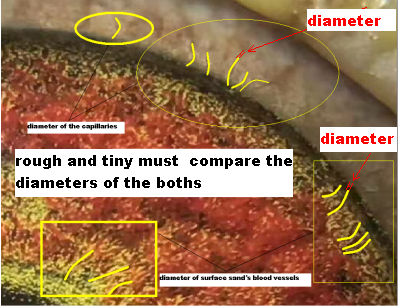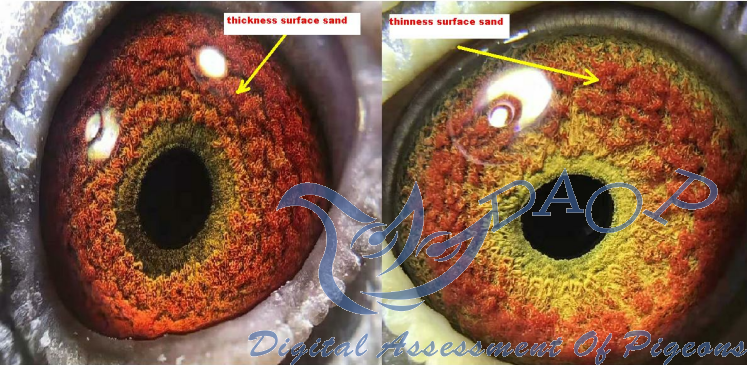

Hello,
Login

|
| DAOP-chinese website is coming soon |
What are the functions and principles of the surface sand?
The color of the iris is produced by capillary and pigmented tissues. The color of the iris we can see is essentially formed by the combination of the bottom sand (pigment tissue) and the surface sand (vessel). The mechanism is like a new color formed by mixing two colors in a certain ratio. As the first layer of the iris, the facial sand is formed by the distribution of blood vessels. Its more functions are to provide and carry the material components needed by the eye, and also to carry the functions of transportation and exchange of nutrients and waste.
①What is the shape of the surface sand vessel in the evaluation system?
The surface sand is formed by blood vessels, and the blood vessels are divided into rough and tiny, so the shape of the surface sand is divided into rough sand and tiny sand. To judge rough or tiny should be based on the comparison between the diameter of the capillaries and the surface sand vessels. When the diameter of the capillaries is larger than the diameter of the sand vessels, the shape of the face sand is tiny, and when the diameter of the capillaries is smaller than the diameter of the sand vessels, the shape of the surface sand is rough. It is medium when it is the same size.

②How to judge the thickness or thinness of the surface sand?
To judge whether the surface sand is thick or thin, we usually decide from the three-dimensional sense of the surface sand: the three-dimensional feeling is reflected in the level or the ladder. It is determined by the surface sand vessels. When the surface sand vessels appear staggered or overlap, we call this sand-type structure a thick-faced sand. When the surface sandvessels are covered horizontally, we refer to this sand type structure as having a thin surface sand.

③How to determine if the surface sand is full or leaky?
When the surface sand is full, we can't see the color of the bottom sand. In other words, the surface sand completely covers the bottom sand. However, when the surface sand leaks, we can see the color of the bottom sand, which means that the surface sand cannot completely cover the bottom sand.